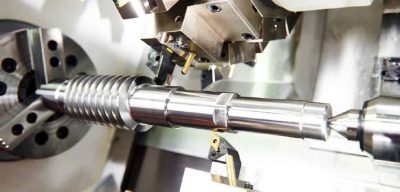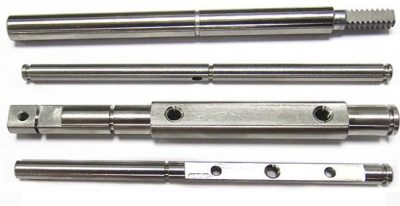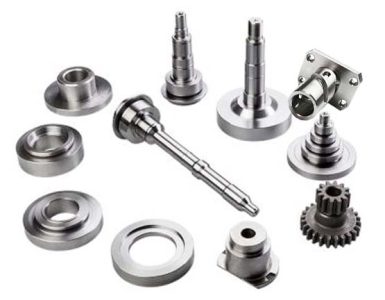Product Categories
Product Tags
CNC Lathe Turning Complex Shape Parts Groove
An example of a larger CNC lathe turned part.
The left part of the picture is a larger stainless steel turning part. Material SUS304, hexagonal opposite side H (height) 45mm, turning thread, turning inner wall, two-level through hole. Although the shape and installation are simple, the machining volume of turning is large. The big picture is attached.
On the basis of automatic lathes, our factory is newly equipped with computer numerical control lathes. Due to the high commissioning time and commissioning cost of a single automatic lathe turning process, there are also certain requirements for the number of orders. The configuration of CNC machine tools solves the user's requirements for multiple varieties, complex shapes, and high precision, and effectively improves the machining capabilities of our factory. Below are some representative products processed by our company for users.
The maximum machining outer diameter of the spindle can reach 80MM under the condition of continuous feeding, and the maximum rotation diameter can be up to 360MM under the condition of separate processing with a chuck; The minimum size of processing is not limited. The materials of the products are mainly copper, iron, aluminum, stainless steel and titanium alloy. Other plastic and acrylic materials can also be processed. It can also be processed according to the drawings provided by the user.
 Long dimension CNC lathe machining parts | Longer size computer lathe machining parts |
 stainless steel Latch pin | A stainless steel Latch pin processed by our company, attached with a large picture. |
 Large-size stainless steel turning parts | An example of a larger CNC lathe turned part. |
 Thin and long shaft machining | CNC lathe machining of thin and long shafts |
 Examples of small aluminum turning parts | An example of a small aluminum turning part. |
Contact Us
Waiting for your email, we will reply you within 12 hours with valuable information you needed.
 English
English العربية
العربية 中文(漢字)
中文(漢字) Čeština
Čeština Dansk
Dansk Nederlands
Nederlands Suomi
Suomi Français
Français Deutsch
Deutsch Italiano
Italiano 日本語
日本語 ಕನ್ನಡ
ಕನ್ನಡ 한국어
한국어 Português
Português Русский
Русский Slovenčina
Slovenčina Español
Español Svenska
Svenska Türkçe
Türkçe




